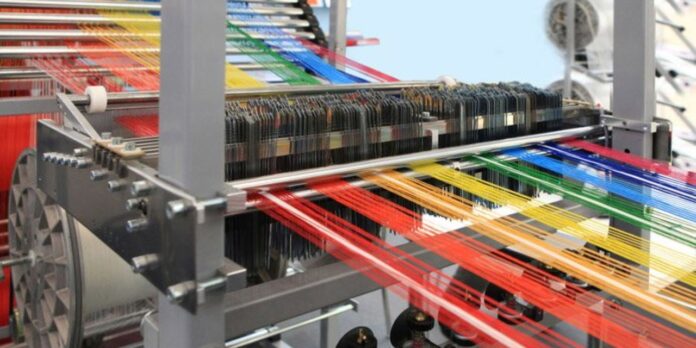The textile industry is undergoing a transformative period driven by innovative technologies and a growing emphasis on sustainability. From the development of fabrics made from recycled materials to the integration of smart textiles with electronic components, the industry is evolving to meet the demands of a changing world. Nanotechnology is enhancing textile properties, while 3D printing is revolutionising design possibilities. T & A textiles and hosiery UK is adopting sustainable fabrics, smart textiles, and digital printing in the textile industry. Digital textile printing is reducing waste and water usage, and circular fashion concepts are reshaping the way garments are produced and consumed. These innovations are not only improving the performance and aesthetics of textiles but also addressing environmental concerns, making the industry more sustainable and adaptable to future challenges.
Recycled Fibers:
Recycled fibres are at the forefront of innovation in the textile industry, offering a sustainable solution to the growing concern of textile waste. By repurposing materials such as plastic bottles, old garments, and industrial waste, recycled fibres reduce the reliance on virgin materials and lower the environmental impact of textile production. Innovations in recycling technology have enabled the creation of high-quality recycled fibres that can match the performance of virgin materials. This shift towards circularity not only reduces waste but also contributes to a more sustainable and resource-efficient textile industry. Recycled fibres are poised to play a significant role in shaping the future of textiles as consumer demand for eco-friendly products increases.
3D Printing:
3D printing is revolutionising the textile industry by offering innovative solutions for design and production. This technology allows for the creation of complex textile structures and patterns that were previously impossible with traditional methods. By layering materials to build up a desired shape, 3D printing reduces waste and enables customisation on a mass scale. Fabrics can be printed directly onto garments, eliminating the need for cutting and sewing, thus streamlining the manufacturing process. Additionally, 3D printing opens up new possibilities for creating lightweight, durable, and even wearable textiles with unique properties, such as embedded sensors for smart textiles or intricate designs for fashion.
AI and Data Analytics:
AI and data analytics are revolutionising the textile industry by enhancing efficiency, sustainability, and customer satisfaction. AI-powered systems are optimising production processes, predicting consumer trends, and enabling personalised products. Data analytics is being used to improve supply chain management, reduce waste, and enhance quality control. These technologies are also driving innovation in product design, enabling the creation of smarter, more functional textiles. By leveraging AI and data analytics, the textile industry is becoming more agile and responsive to market demands while also reducing its environmental footprint through improved resource utilisation and waste reduction.
Biodegradable Raw Materials:
One of the most significant innovations in the textile industry is the use of biodegradable raw materials. Manufacturers are increasingly turning to natural sources such as algae, fungi, and bacteria to create fibres that break down easily after disposal, reducing environmental impact. These biodegradable textiles offer a sustainable alternative to traditional synthetic fibres, which can take hundreds of years to decompose. By embracing biodegradable raw materials, the textile industry is moving towards a more circular economy, where materials are reused, recycled, or biodegraded at the end of their life cycle, contributing to a more sustainable future for the industry and the planet.
Nanotechnology:
Nanotechnology is revolutionising the textile industry by introducing innovative solutions to enhance fabric performance and functionality. Nanoparticles are being integrated into textiles to impart unique properties such as water repellency, stain resistance, and antimicrobial capabilities. These nanoparticles can be applied to fabrics during the manufacturing process or as a coating, creating textiles that are more durable and versatile. Additionally, nanotechnology enables the development of smart textiles with embedded sensors for monitoring health or environmental conditions. This technology is not only improving the quality and functionality of textiles but also reducing the environmental impact of textile production by enhancing durability and reducing the need for frequent washing.
Temperature-Sensitive Clothing:
Temperature-sensitive clothing is a groundbreaking innovation in the textile industry, offering wearers a new level of comfort and functionality. These garments use advanced materials that respond to changes in temperature, providing warmth when it’s cold and cooling when it’s hot. This technology is particularly beneficial in activewear, outdoor gear, and even everyday clothing, enhancing comfort and performance. By regulating body temperature, these garments reduce the need for layering and can contribute to energy savings by reducing reliance on heating and cooling systems. Temperature-sensitive clothing represents a significant advancement in textile innovation, combining functionality with sustainability to meet the evolving needs of consumers.
Conclusion:
The textile industry is at the forefront of innovation, with new technologies and approaches reshaping the way textiles are produced and used. Among the advancements driving this change are sustainable fabrics, smart textiles, and 3D printing. These innovations are not only improving the functionality and aesthetics of textiles but also addressing environmental concerns by reducing waste and resource consumption. As the industry continues to evolve, companies must embrace these innovations and adopt sustainable practices to meet the demands of a changing market and contribute to a more sustainable future.

































